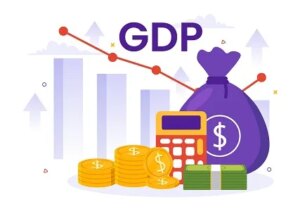Understanding Stagflation: The Current Economic Landscape

The recent economic indicators paint a sobering picture of the U.S. economy, highlighting the unsettling reality of stagflation—a term that signifies stagnant growth paired with high inflation. At Extreme Investor Network, we delve into the nuances of this phenomenon, guiding you through the complexities that shape our financial landscape.
A Contraction in Growth
In the first quarter of 2025, the U.S. economy contracted by 0.2%, a concerning indicator from the Commerce Department. It marks a significant moment in our economic cycle, especially as we await a revised estimate on June 26. This contraction is compounded by a dramatic 42.6% surge in imports as businesses rushed to stockpile goods before anticipated tariffs. Not since Q3 2020 have we seen such a spike in goods entering the country, signaling potential volatility ahead.
Business Investment vs. Government Spending
Interestingly, business investment saw a robust increase of 24.4% during the same period, contributing substantially to our GDP. However, federal government spending took a hit, dropping by 4.6%—the largest decline in three years. This paradox illustrates the delicate balance where corporate investment seeks to thrive while government spending falters.
The Spending Shift
Consumer behavior tells a different story. Real consumer spending climbed by 1.2%, up but significantly less than the robust 4% increase witnessed in Q4 2024, revised down from an initial 1.8%. Many Americans are now prioritizing essential spending—utilities, healthcare, and housing—over discretionary purchases. The Personal Consumption Expenditures (PCE) price index, a key inflation gauge, surged by 3.6%, putting a damper on discretionary spending and indicating cautious consumer sentiment.
A Decline in Discretionary Retail
The discretionary retail sector experienced a notable 3% decline, while the demand for durable goods plummeted by 19%. Consumer confidence, reflected in the University of Michigan’s survey, shows that spending on big-ticket items has waned as cautious behavior takes hold. For instance, while auto purchases rose by 4.8% in Q1, this was largely due to preemptive spending before anticipated tariff impacts. The future looks uncertain as consumer sentiment trends downward.
Inflation and Interest Rates: A New Dilemma
April’s Consumer Price Index (CPI) reading of 2.3% represented the smallest annual increase since 2021, yet it remains above the Fed’s long-term 2% target. The Federal Reserve has shifted away from aggressively fighting inflation—now focused on preserving confidence in the dollar and the beleaguered bond market. This adjustment in strategy suggests we may not experience the soft landing many economists had once anticipated.
The Fed’s Stance and Political Pressures
Recently, Fed Chair Jerome Powell met with former President Trump, insisting that interest rate decisions would be made based on "careful, objective, and non-political analysis." Trump’s call for a rate cut implies a misunderstanding of the Fed’s current priorities amid cash deficits exceeding $1 trillion per quarter. With Moody’s latest downgrade of the U.S. credit rating, the Fed finds itself in a precarious position, tasked with preserving an illusion of solvency within a financially strained government.
Embrace the Knowledge, Invest Wisely
As we navigate these turbulent waters, staying informed is crucial. At Extreme Investor Network, we prioritize providing insights that matter. Understanding the complexities of stagflation can empower you to make better investment decisions in these uncertain times. Rather than succumb to panic, leverage this knowledge to identify opportunities and safeguard your financial future.
Stay tuned as we continue to unpack the intricacies of the global economy and what they mean for you as an investor. Join us in looking beyond the numbers—it’s about comprehending the "why" and "how" behind them.

